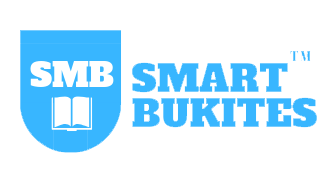You can have the best of qualifications, the best of experiences, or even the best of skills and remain unemployed. It happens… alot!
While the other guy with low class of degree, no professional certificate, and sometimes, low skill set gets employed before you.
What annoys you the most is the sleepless night you spent compiling your ‘irresistible CV’ only to get ghosted by the HR team. If they get so kind, they send you a mail that reads…
At this time, we are not able to move forward with your candidacy for this position. We appreciate the time you took to apply.
I can tell you now and again that you can keep getting rejection emails if you don’t know how to write a CV or should I say how to make your CV standout even if you have the best of work experience.
In our previous article, we took time to outline;
- what a CV is
- why you need a great CV
- how to structure your CV even without a work experience
- general checklist for CV writing
- what to include in you CV
- and even a sample of CV with no work experience
Have you seen the article? Click here if you haven’t. In this article, you’re going to be learning how to show your work experience on your CV that gets you invited for an interview.
How to show work experience on your CV
Before we dive deep into this article, it’s important you note that your work experience is the most valuable part of your resume. Study shows that most recruiters would find your work experience as the first place to visit. Therefore you need to organize your CV to make the work experience section:
- quick to identify
- sell your value immediately
Now, let’s dive deep into the article
The heading must stand out
To do this, title your resume work experience with one of the following;
- Experience
- Work Experience
- Work History
- Employment History
Make sure the title is larger than other parts of your job description and it’s written in bold and ALL CAPS
Make your work experience section easy to find
You can place it right below your resume summary if you have lots of experience or below your education section if you’re an undergraduate or a fresh graduate
List your job descriptions in reverse chronological order
Start with your most recent job, it could be your current placement or your last job if you’re currently unemployed. Then follow with the previous one, then the one before that, and so on. By doing this, you put out your best. The height of your career, and your most recent job, will get the most attention.
Make each job entry clear and legit
You can start each entry with either your position or company name. It doesn’t really matter, just make sure you maintain the same layout. Same thing with dates, if you choose to right-align dates, right-align all of them. At the top of every job description, put;
- company name
- your job title
- company location and date (right-aligned)
Like this:

Use relevant job description bullets for each job
Your current or most recent job should have the most bullets. As you go back in time, reduce the number of job description bullet points. Focus on describing your achievements, not just your duties or job responsibilities. Focus on achievements that are relevant to the job you’re applying. Make sure to use action words and power verbs that support your skills to make it more persuasive.
Wrong description to use (Notice that they are generic and not convincing)
- Responsible for creating sales copy
- Successfully launched her email marketing
- Created blog posts
Right (More descriptive and result-oriented)
- Developed compelling and persuasive copy for various marketing campaigns increasing sales by over 40%.
- Initiated, created, and launched her email marketing generating 10 leads per day.
- Researched and generated engaging content ideas for SmartBukites’ blog to attract and retain 60% of its target audience.
Don’t forget to add a “Key Achievement” subsection
This will help grab recruiters’ attention like a magnet to a metal. Here, you mention something you can’t afford your prospective employer to miss. There’s a formula for it. Use the Problem-Action-Result (PAR) to describe your success.
Let me show you how the PAR formula works;
Key achievement;
- Developed compelling and persuasive copy for various marketing campaigns increasing sales by over 40%.
Problem – poor sales
Action – developed persuasive copy
Result – increased sales by almost 50%
You can use this formula for every bullet point in your resume job description. Get a pen and paper, and try it out. It does the same magic on LinkedIn as well.
Just in case you find creating your CV stressful and time-consuming, we have a tool to help you craft the right CV for the job. It’s completely free. Build your CV in 5 minutes!
